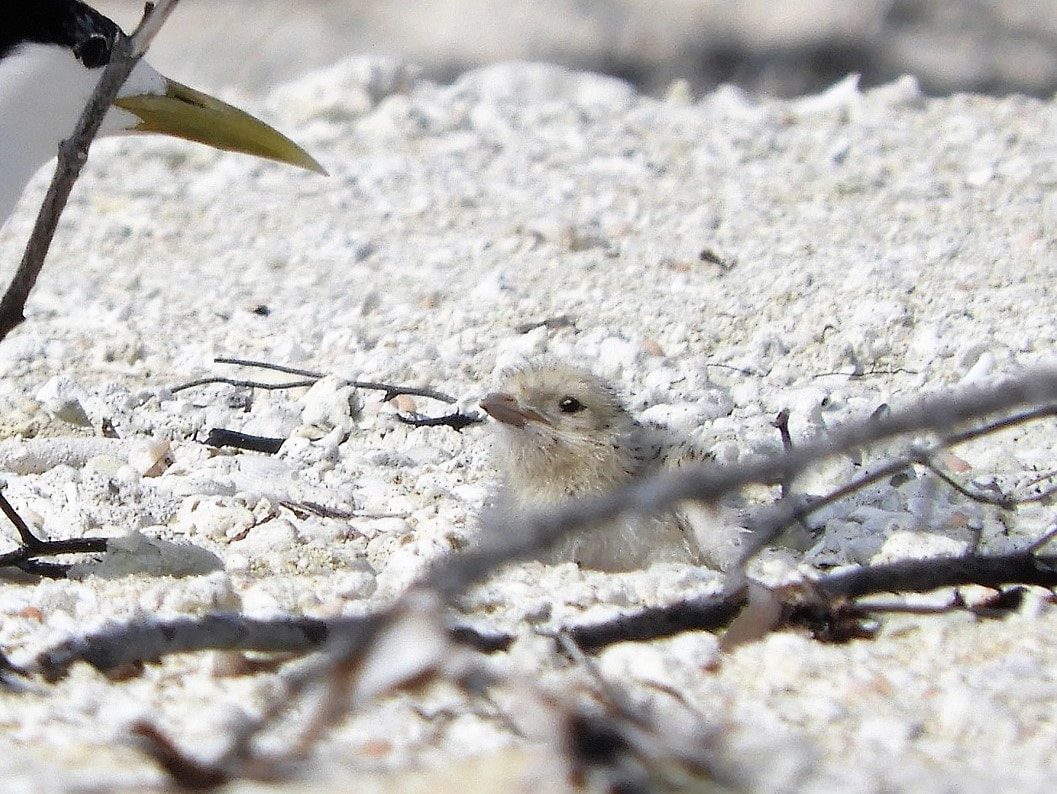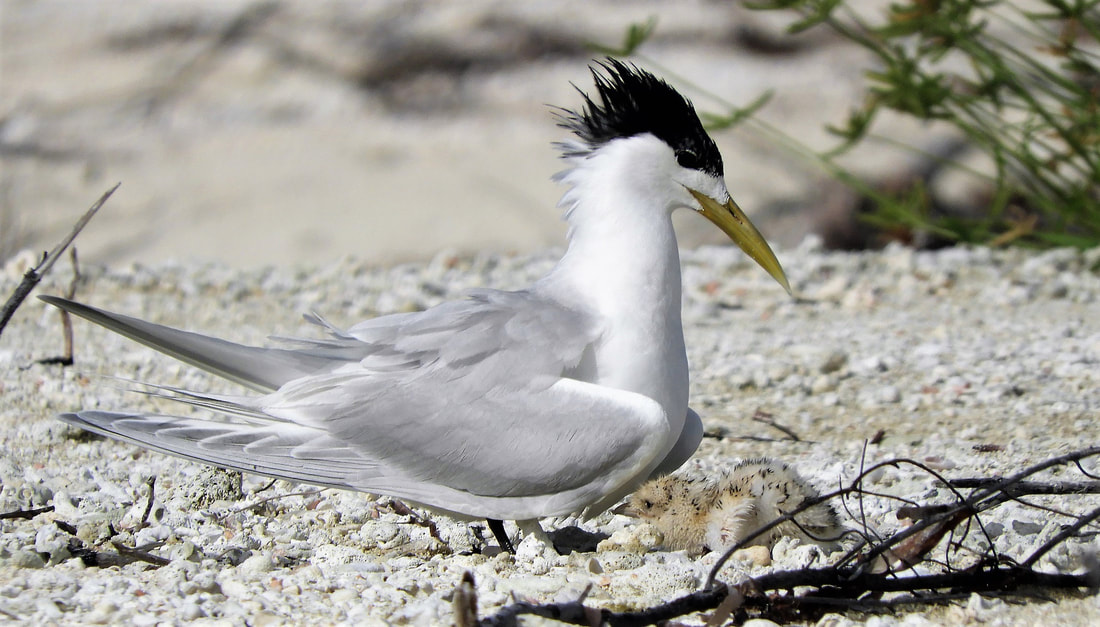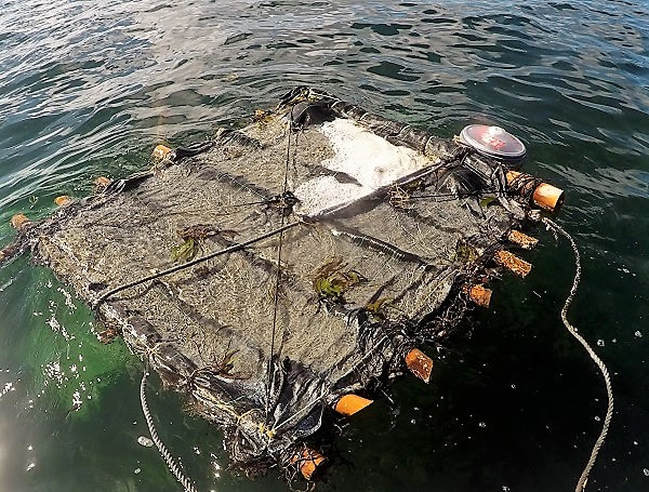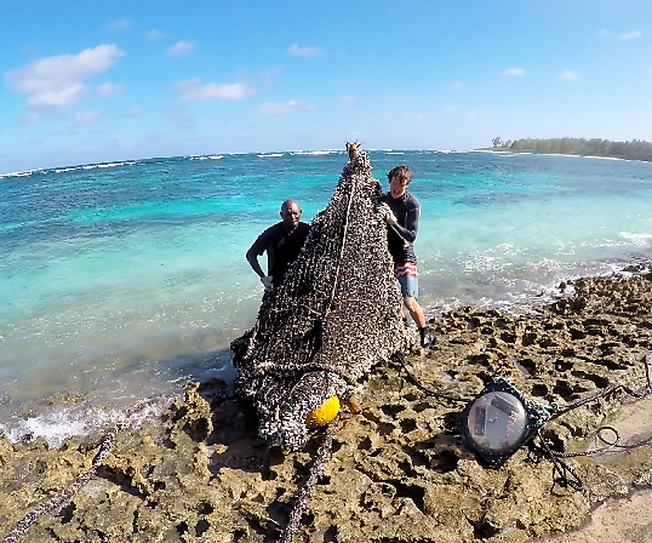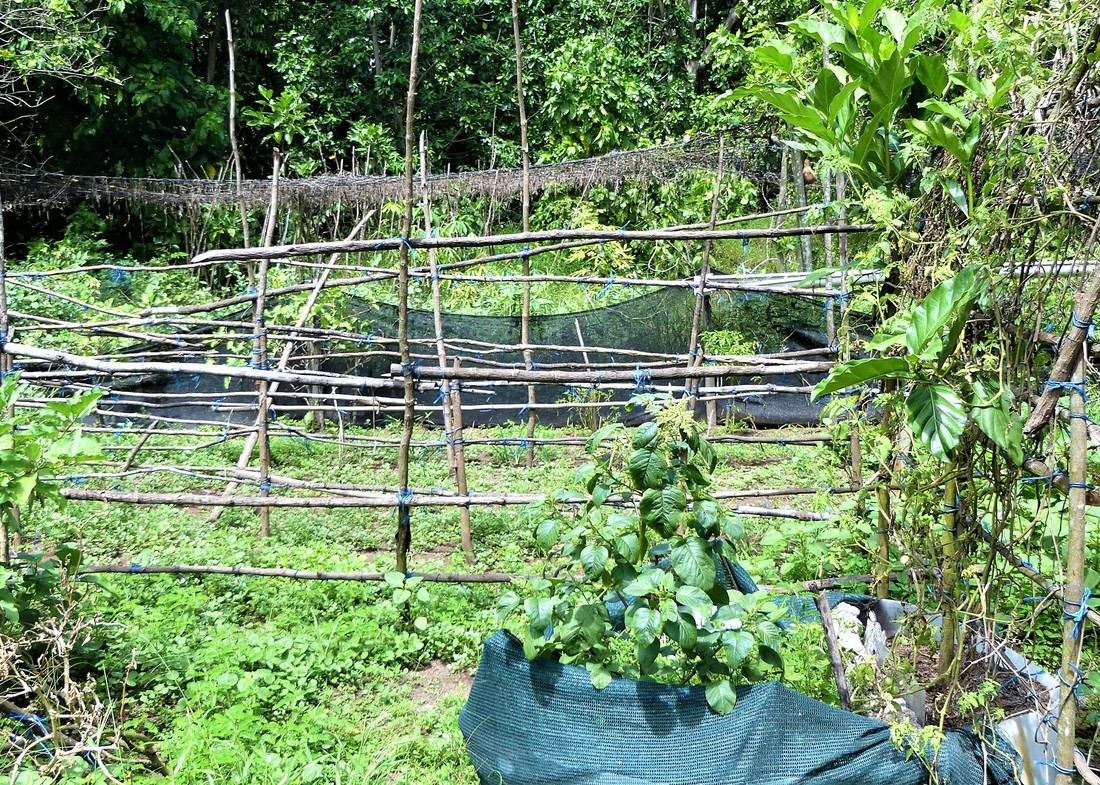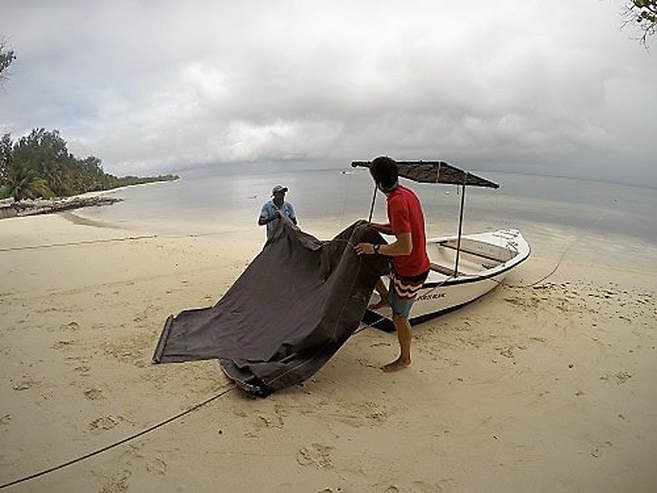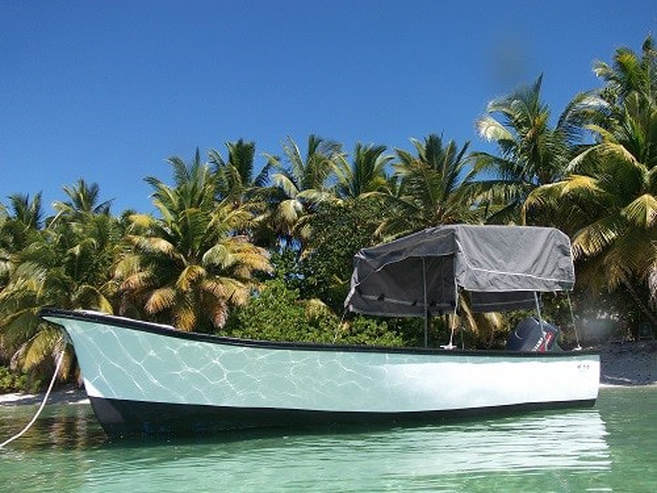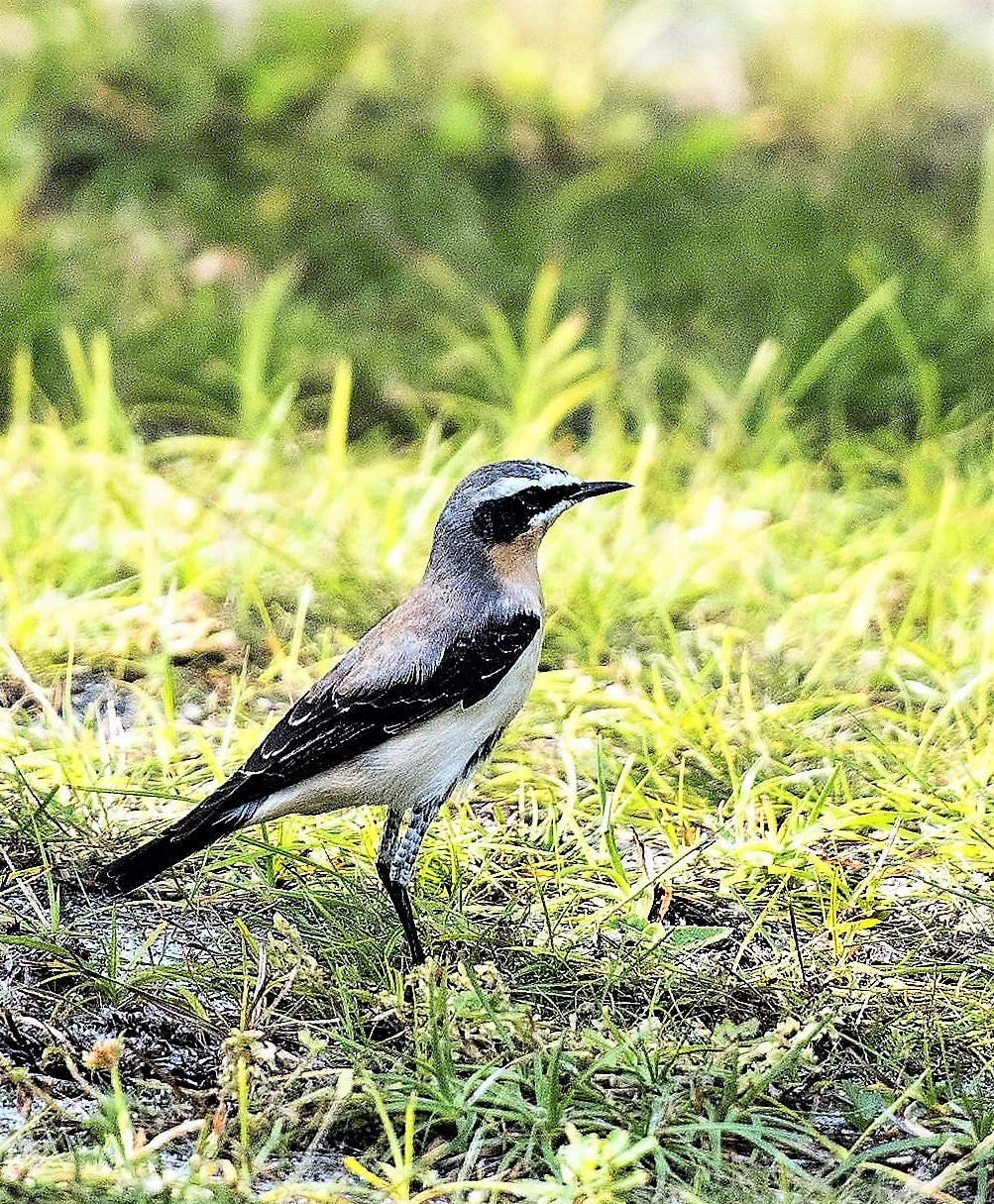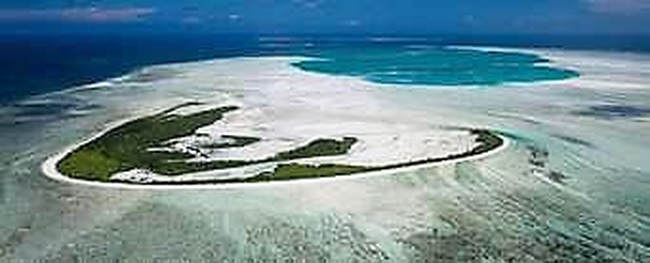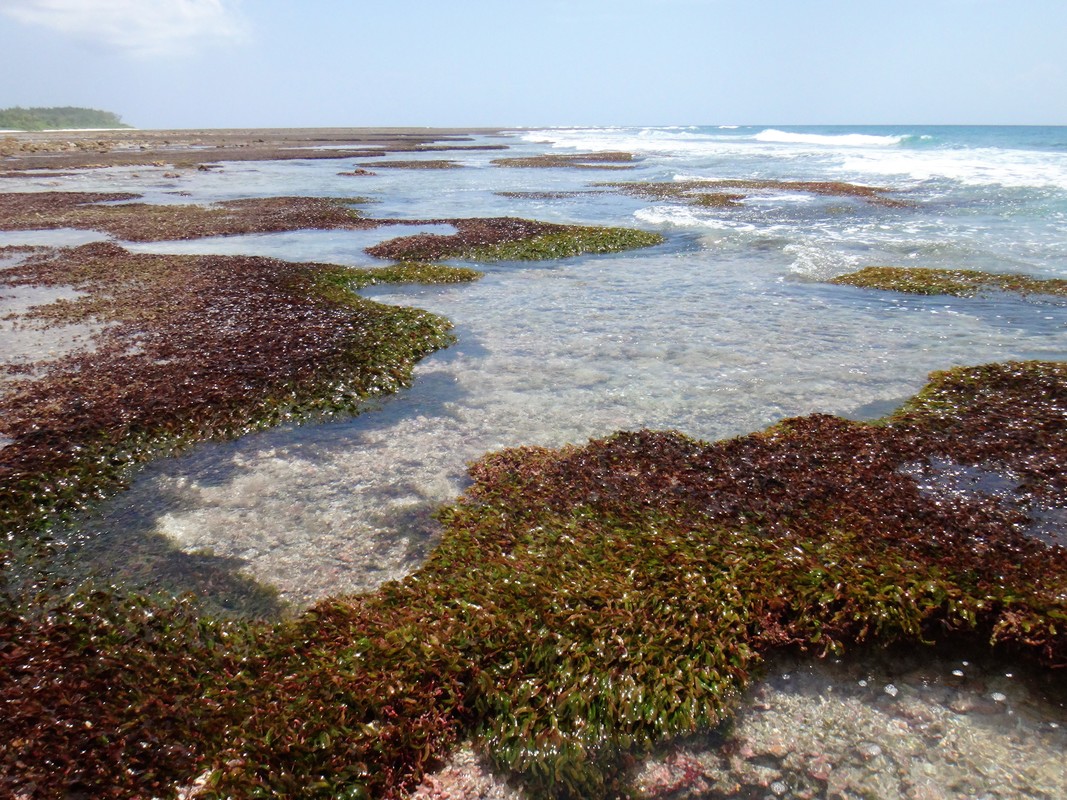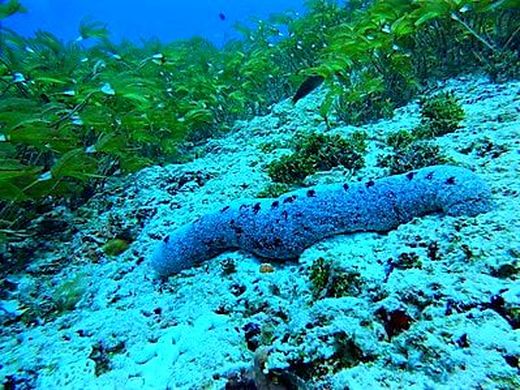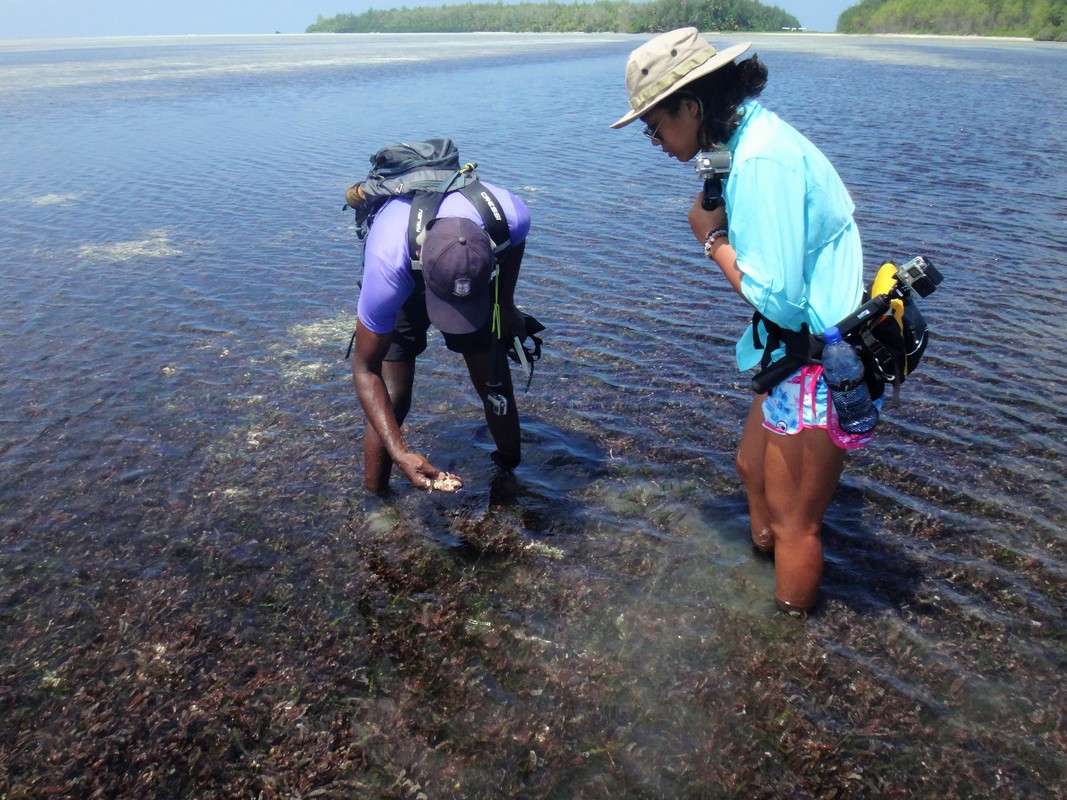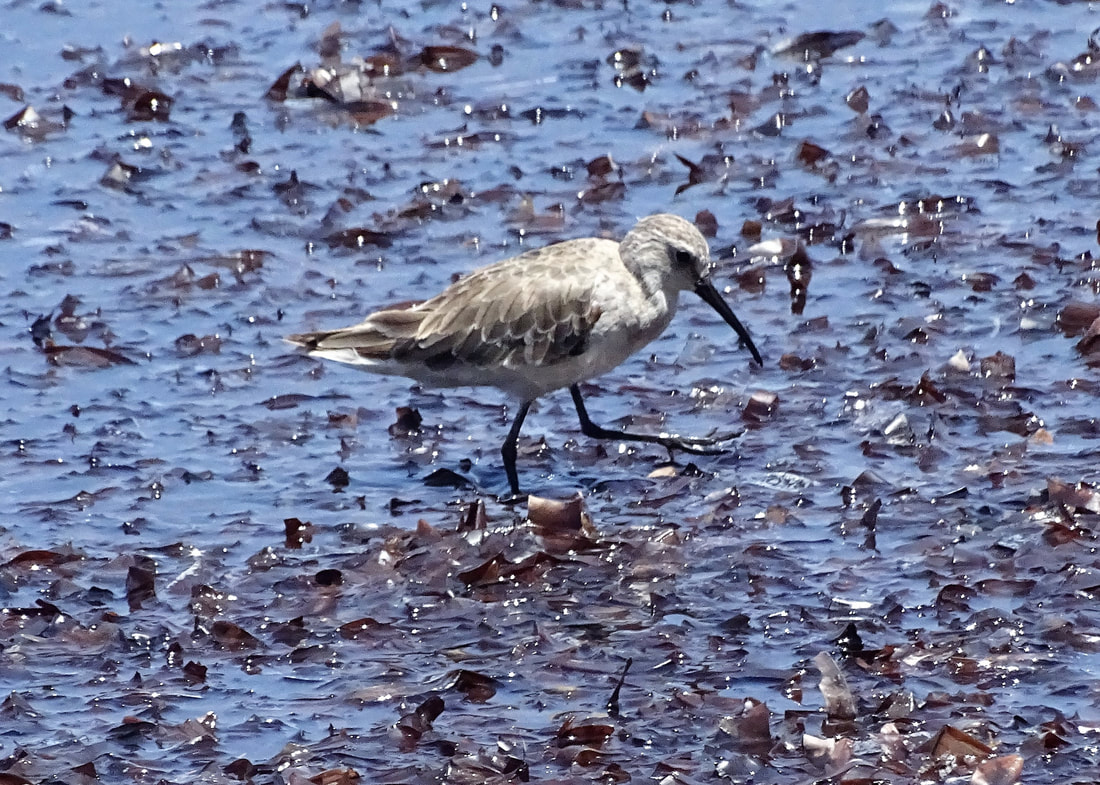|
The first Greater Crested Tern Thalasseus bergii nest observed on Bancs du Sable in 17 years has a chick! After a month-long incubation, GCT chicks hatch with eyes open and a protective, temperature-regulating coating of down. This chick will remain dependent on its parents for food and protection from predators for 38 - 40 days before fledging. Our ICS Farquhar Conservation Team are thrilled to share this news, and report that a second nest has been spotted close by. Greater Crested Terns are known to use individual and group breeding sites, so perhaps this could signal the start of a new larger colony. A new Seabird Monitoring Protocol recently introduced under the GOS-UNDP-GEF Outer Islands Project is standardising data collection methods for important species across the islands of Farquhar, Desroches, Alphonse and Poivre. Building systematically on the work of conservationists over the past 10+ years, these data sets will be used to inform marine spatial planning and species management for biodiversity conservation and sustainable use in the Outer Islands at Seychelles, regional and international levels.
0 Comments
Living in a remote location on a tiny island in the middle of the Indian Ocean sounds idyllic, and it is. Yet it can prove challenging in some respects - for instance in having regular access to supplies and equipment that some of us take for granted. Our "Can Do" Conservation Team struggled a bit when their research boat's covering began disintegrating after many years' loyal service. A replacement was some months in the offing. What To Do? Make one! By upcycling remnants of FADs (Fish Aggregating Devices) which had come adrift, the team were able to fashion a hardy boat cover AND reduce environmental impacts to the reef and nearshore habitats. ,FADs wash up on Seychelles Outer Islands year round. Typically they have a floating frame which suspends curtain nets, sausage nets and rope (along with anything else which could attract fish). Most of the materials are non-biodegradable. They are a major threat to wildlife and boats. ICS staff intercept FADs to reduce the entanglement of marine megafauna; sharks, turtles, mammals etc. and to reduce coral, seagrass and beach damage. After a FAD is collected, the teams try and recycle the materials, instead of their going to landfill. Bamboo frames and nets are used for climbing plants in the vegetable garden. Some frames however, are made of galvanised steel. These, like boat anchors, are destructive to reefs and seagrasses, breaking corals and uprooting plants as they wash ashore. Matthew Morgan, Conservation Ranger on Desroches, explains: “After saving one frame and parts of another we had enough material to make our DIY boat cover. Two poles were welded onto an intact frame which was then mounted over our small boat. Luckily the frame was the exact dimension for the boat which made this a relatively quick job! We used shade cloth and an old boat cover salvaged by ICS in 2015 (and sitting beside our office ever since). This was mounted over the FAD frame and secured to the boat with rope. The cover has helped with marine mammal surveys, collecting sea surface temperature and coral reef surveys. If something is useful we never throw it away, when you live on an outer island you never know what you may need or where you will get it from! Awesome.
Most visitors from Europe in search of winter sunshine hop on a plane, taking a round trip of 10,000 kilometres or more to reach Seychelles. One small bird may travel three times this distance entirely through its own exertions. At Alphonse, a pair of Northern Wheatears arrived in mid-January, both remaining for a few days. Seychelles Bird Record Committee has accepted 76 records of Northern Wheatear and around 60% of all records are in January and February, later than any other migratory land species, for which sightings peak in October to December. What could explain the lateness of these sightings? Northern Wheatears breeding in Western Europe have spread to eastern North America in recent times while the Asian breeding population has spread to Alaska, with four recognized subspecies. However, all populations winter in Africa. To reach western Africa, birds in eastern North America travel via Europe while those breeding in Alaska go the opposite way around the globe and cross the whole of Asia to reach eastern Africa. So the pair on Alphonse Island are most likely to be birds from as far away as Alaska, using the East Asia/East Africa Flyway. Miniature tracking devices have recently shown that the Northern Wheatear has one of the longest migratory flights known - 30,000 kilometres. Birds crossing Siberia and the Arabian Desert are travelling, on average, 290 kilometres per day. This is the longest recorded migration for any songbird. Migration is a feat of extreme endurance, driven primarily by the availability of breeding and feeding opportunities. It involves costs in terms of predation and high mortality. Timing seems to be controlled by changes in day length. The long days of the northern summer provide abundant food, extend time for breeding birds to feed their young, and thus help diurnal birds to produce larger clutches. Northern Wheatears and other migrating species build up fat reserves during this time, some even doubling their body weight, in preparation to head south for the winter. These advantages offset the high stress, physical exertion, and other risks linked to migration. Short migrations are common in many bird species, including those made in response to changes in habitat, weather, food availability, and/or altitudinal migrations on mountains such as the Himalayas, where birds nesting at high altitudes overwinter at lower altitudes. Most birds migrate in flocks, at varying altitudes, to reduce the energy cost. Even penguins migrate, swimming routes of over 1,000 kilometres. There are many fascinating theories - and equally fascinating questions - about this seasonal, predictable occurrence. Bird migration was first recorded 3,000 years ago by the ancient Greeks. We now know that birds navigate using celestial cues from the sun and stars, the earth’s magnetic field, and inbuilt genetic “mental maps”. One theory gaining ground is that birds and many other land species follow a “green wave” of spring plant and insect emergence; however, much is still being learned today. 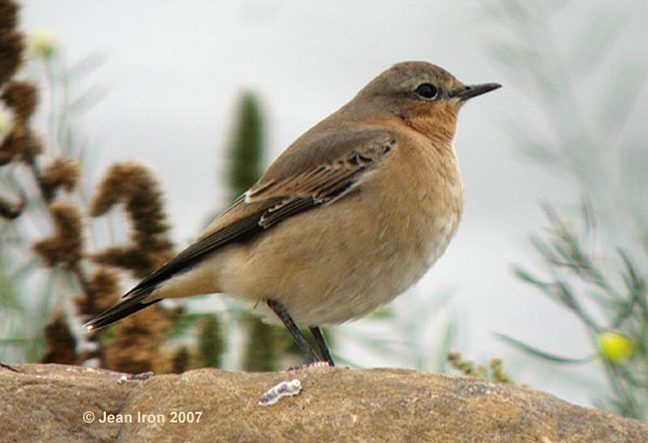 Birds lay down fat reserves prior to the long and arduous migration, even to doubling their body weight. Photo Jean Iron (Ontario Canada) Birds lay down fat reserves prior to the long and arduous migration, even to doubling their body weight. Photo Jean Iron (Ontario Canada) Alphonse is one of the best places in Seychelles to see rare visiting birds. Its isolated location in the vast Indian Ocean provides an attractive target for tired migrants seeking a stopover to rest and refuel. During recent months, we have recorded many interesting species that included Alphonse Island in their flyway to make their seasonal migration. In fact, it has been surprising to see the diversity of species that passed through. They include Pacific Golden Plover Pluvialis fulva, Collared Pratincole Glareola pratincola and Black-winged Pratincole G. nordmanni, Yellow Wagtail Motacilla flava and White Wagtail M. alba, Red-throated Pipit Anthus cervinus, Amur Falcon Falco amurensis, Common Cuckoo Cuculus canorus, Blue-cheeked Bee-eater Merops persicus, Broad-billed Roller Eurystomus glaucurus, Common Swift Apus apus, and many others.
Happy World Wetlands Day! Protecting and enhancing wetlands biodiversity on Seychelles beautiful islands is one of our missions. Wetlands are some of Earth’s most biodiverse and productive ecosystems, providing rich habitat and acting as wildlife nurseries, filtering nutrients and pollutants, preventing erosion, offering storm and flood protection and encouraging nature recreation. Swamps you say? But Wetlands are so much more! Wetlands are places where the land is covered by water, either salt, fresh or somewhere in between. Wetlands include lakes and rivers, underground aquifers, swamps and marshes, wet grasslands, peatlands, oases, estuaries, deltas and tidal flats, mangroves and other coastal areas, coral reefs, and all human-made sites such as fish ponds, rice paddies, reservoirs and salt pans. Seychelles is rich in many types of Wetland, from the high altitude freshwater wetlands recognized under the Ramsar Convention right through to our coral reefs and the connected patchwork of systems in between. Seagrass meadows are abundant yet poorly studied wetland habitats in Seychelles. Seagrasses are flowering aquatic plants that grow and spread their pollen and seeds underwater in marine environments. Seagrass meadows are biodiverse habitats, providing important grazing grounds for Dugong, and for Green Turtles and Hawksbill Turtles, both of which nest in Seychelles. They offer protected nursery environments for many of our important fish species and macroinvertebrates. They offer foraging and staging opportunities for migratory shorebirds, and help reduce the impacts of climate change by acting as carbon sinks. Under the GOS-UNDP-GEF Outer Islands Project, an ICS Expedition Team recently visited Poivre to survey its seagrass communities and collect baseline data. Using a new world’s best practice protocol, standardized across the Outer Islands, they made some encouraging new discoveries. This data will contribute to submissions to Seychelles’ proposed Marine Spatial Plan, recognising the importance of protecting and preserving these fascinating communities into the future.
|
Categories
All
Archives
June 2024
|

